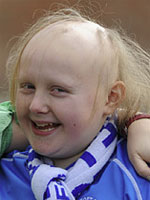Can you tell me about the Neograft technology. Is it better that what is out there?

 Automation of the hair transplant process has been a goal of doctors from the earliest part of their career because of the tedious manual processes used today. In particular, with the large sessions, fatigue becomes a problem and the skill sets required of the staff take years to acquire proficiency.
Automation of the hair transplant process has been a goal of doctors from the earliest part of their career because of the tedious manual processes used today. In particular, with the large sessions, fatigue becomes a problem and the skill sets required of the staff take years to acquire proficiency.
I have been a pioneer of many of these devices, receiving patents on some of them. Included was the Carousel, and a series of follicular unit extraction (FUE) techniques devised for faster extraction. The NeoGraft machine is just one of the newer devices, but unfortunately it has its problems.
NeoGraft uses a vacuum system to assist in the removal of grafts that are first partially dissected with a sharp punch. The grafts that are “sucked” out of the scalp are collected in a chamber. The grafts are then removed from the chamber and drawn up, again by suction, into a needle and then injected into pre-made recipient sites using air pressure. The NeoGraft seems to eliminate some of the risks of mechanical injury to grafts in traditional FUE by not requiring forceps to remove grafts from the donor site or insert the grafts into the recipient area and, in theory, may save time by eliminating the need to extract grafts manually. A concern expressed by those who have seen the system in action is that the suction removal has a tendency to strip the surrounding tissue from the lower portion of the grafts or pull out just the upper part of the graft. Because the grafts are exposed to a great deal of air movement, the continuous flow of the vacuum adds to the risk of graft drying, a problem well known to be a major cause of poor graft survival. To our knowledge no independent studies have been performed to show that grafts are not harmed by this vacuum technique and it is our concern that the drying action of the air on the exposed grafts may limit their growth. As many of the grafts are stripped from their fat, the risks to the grafts are theoretically significant.
Restoration Robotics (RR) has a better way to do this with a robot, but it is not yet on the market and it will most probably be very expensive. RR have been successful at doing FUE, although slowly, but they have yet to demonstrate an ability to place grafts mechanically.
There is no substitute to learning and mastering the manual skills that are used in the best hair transplant clinics around the world. So without a good automation instrument, many of the doctors who use an unproven method for hair transplantation just makes the risks to the hair transplant procedure greater and the work by the doctors who use them possibly second class. Would you buy grafts from a second class surgical team and pay the consequences of poor growth?

 The location of the incision should be within 1/2 cm above the notch on the back of the skull in the midline and then if it needs to be longer, taken to about 1 inch above the ears. The permanent fringe area is seen in the Norwood class 7 patient (see diagram) and measures 2 1/2 inches high. If the surgeon takes the strip above this 2 1/2 inch point in the midline, it would not reflect the permanent hair.
The location of the incision should be within 1/2 cm above the notch on the back of the skull in the midline and then if it needs to be longer, taken to about 1 inch above the ears. The permanent fringe area is seen in the Norwood class 7 patient (see diagram) and measures 2 1/2 inches high. If the surgeon takes the strip above this 2 1/2 inch point in the midline, it would not reflect the permanent hair. I’ve written about this issue many times before on BaldingBlog (some examples are
I’ve written about this issue many times before on BaldingBlog (some examples are  When football fanatic Sophie Nixon started losing clumps of her hair, no one in her family knew that bullying at school was making the youngster ill. Now the 12-year-old from Lowestoft has spoken out about her alopecia to encourage other young people to seek help if they are being bullied.
When football fanatic Sophie Nixon started losing clumps of her hair, no one in her family knew that bullying at school was making the youngster ill. Now the 12-year-old from Lowestoft has spoken out about her alopecia to encourage other young people to seek help if they are being bullied.
 You want my comments about their website? Sure. The generic sounding “ProFollica” name reminds me of so many other hair products, which they probably chose to capitalize on the other treatments that advertise more. Their website has a nice blue color behind the content, but the main background looks like the floor of a fraternity bathroom after a night of binge-drinking and eating Skittles. It looks like a rainbow exploded. I’m also not a fan of the prominent use of stock photos of smiling, well-coiffed men (or the other photos of pensive men with great hair, perhaps considering a purchase of this garbage). The site tries to debunk some myths in its filler content, but it gets some of them wrong. One of the myths it correctly debunks was one I hadn’t heard before in all my years of working with hair loss patients — the one about hair loss not being caused by “thinking too much”. They’re right, using your brain can’t harm your hair. Thanks for clarifying that, ProFollica team!
You want my comments about their website? Sure. The generic sounding “ProFollica” name reminds me of so many other hair products, which they probably chose to capitalize on the other treatments that advertise more. Their website has a nice blue color behind the content, but the main background looks like the floor of a fraternity bathroom after a night of binge-drinking and eating Skittles. It looks like a rainbow exploded. I’m also not a fan of the prominent use of stock photos of smiling, well-coiffed men (or the other photos of pensive men with great hair, perhaps considering a purchase of this garbage). The site tries to debunk some myths in its filler content, but it gets some of them wrong. One of the myths it correctly debunks was one I hadn’t heard before in all my years of working with hair loss patients — the one about hair loss not being caused by “thinking too much”. They’re right, using your brain can’t harm your hair. Thanks for clarifying that, ProFollica team!